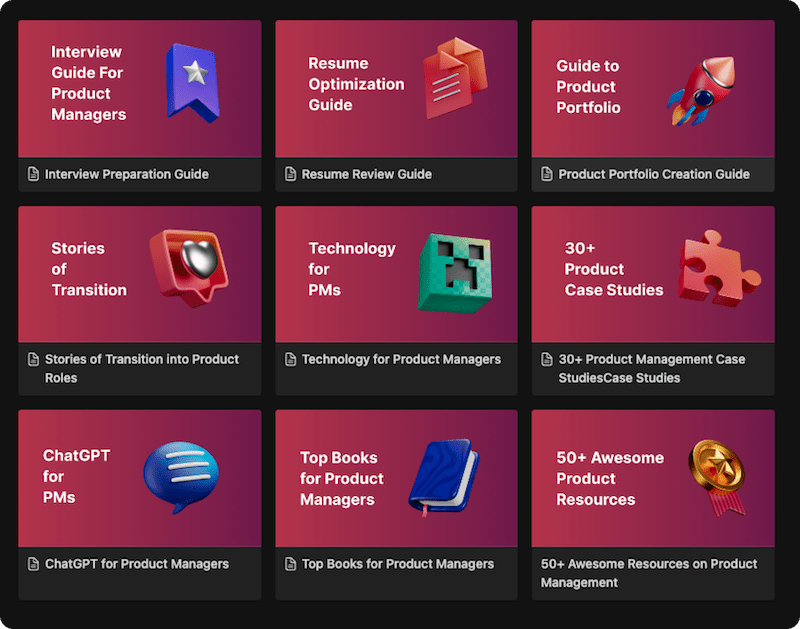Have you ever launched a feature, seen a promising spike in sign-ups, and declared it a success, only to check the Analytics & Metrics a month later and find a ghost town? The initial numbers looked good, but nobody stuck around. This common, sinking feeling for product managers highlights a critical truth: acquisition is vanity, but engagement is sanity. Attracting users is only the first step; the real challenge—and the key to long-term success—is keeping them active, interested, and deriving value from your product. But how do you measure something as seemingly intangible as “engagement”?
The answer lies in mastering User Engagement Metrics. These are not just numbers on a dashboard; they are the vital signs of your product. They are the data-driven language that tells you whether users are truly connecting with the value you’re providing or are simply passing through. This guide will take you from a novice’s understanding to a pro’s command of these essential metrics. We will break down what they are, why they are the bedrock of a healthy Product-Led Growth (PLG) strategy, and how to choose and use the right ones to diagnose your product’s health and drive sustainable growth.
The Shift to an Engagement-Centric World
The intense focus on user engagement is a direct result of the rise of the subscription economy and the SaaS Product Management model. In the old world of on-premise software, a one-time purchase was the primary success metric. But in a world of MRR (Monthly Recurring Revenue) and subscription renewals, a customer who signs up but doesn’t use the product is a liability—they are a prime candidate for [Customer churn]. This shift, pioneered by consumer tech giants like Facebook and now dominant in B2B SaaS, has made understanding and optimizing for engagement the central task of modern product management.
Why You Can’t Afford to Ignore User Engagement Metrics
Tracking these metrics is not optional; it’s fundamental to building a successful product.
- They Are a Leading Indicator of Retention: Highly engaged users are far less likely to churn. By monitoring engagement, you can proactively identify at-risk users and intervene before they cancel.
- They Pinpoint Product Value (or Lack Thereof): Metrics can show you which features are beloved “power features” and which are digital ghost towns. This is invaluable for informing your
[Product Roadmap]and[Feature Prioritization]. - They Drive Sustainable Growth: Happy, engaged users are your best marketing channel. They are more likely to upgrade, expand their usage, and refer new customers, leading to a higher
Customer Lifetime Value (LTV). - They Validate Your Product Strategy: Every feature you build is a hypothesis. Engagement metrics are how you measure the results of your experiments, allowing you to double down on what works and cut what doesn’t.
- They Create a Common Language: Metrics align
Cross-functional Teams, from product to marketing to customer success—around a shared, objective understanding of user behavior and product health.
The Hierarchy of User Engagement Metrics: A Framework for Understanding
User engagement isn’t a single number. It’s a spectrum of user behavior, from basic awareness to deep, habitual use. A helpful way to think about this is a hierarchy of engagement.
Level 1: Active Usage Metrics (Are they showing up?)
This is the foundation. Before a user can be engaged, they must be active.
- DAU (Daily Active Users) & MAU (Monthly Active Users): The number of unique users who perform any action in your product on a given day or in a 30-day period.
- The DAU/MAU Ratio (Stickiness): This is a powerful metric calculated by
DAU ÷ MAU. It tells you what percentage of your monthly users return on a daily basis. A “good” ratio varies, but for social products, 20% is considered decent, and 50%+ is world-class.
Level 2: Feature Adoption & Usage Metrics (What are they doing?)
Once you know users are active, you need to understand what they are doing.
- Feature Adoption Rate:
(Number of new users who used a specific feature) ÷ (Total number of new users). This tells you how well a new feature is being discovered and used. - Key Action Completion: This is a product-specific metric. For Airbnb, it might be “Bookings Made.” For a project management tool, it could be “Tasks Created.” You must define the core actions that signify a user is getting value.
- Time Spent / Session Duration: How long users are actively spending in your product. While useful, this can be misleading (is a long session a sign of engagement or confusion?), so it should be paired with other metrics.
Level 3: Retention Metrics (Are they coming back?)
This is where the true health of your product is revealed. Retention is the ultimate sign of engagement.
- User Retention Rate:
(Number of users from a cohort who are still active in a later period) ÷ (Total users in the initial cohort). This is often visualized with aCohort Analysischart. - Customer Churn Rate: The percentage of customers who cancel their subscription in a given period. It’s the arch-nemesis of engagement.
Level 4: Qualitative Metrics (How do they feel?)
Numbers tell you what’s happening, but they don’t always tell you why. Qualitative metrics add the human layer.
- Net Promoter Score (NPS): Measures user loyalty by asking, “How likely are you to recommend this product to a friend or colleague?” on a scale of 0-10.
- Customer Satisfaction Score (CSAT): Typically measures satisfaction with a specific feature or interaction by asking, “How satisfied were you with this experience?”
- Customer Health Score: A composite, often proprietary score that combines several metrics (like usage frequency, NPS, and support tickets) to give a single, at-a-glance view of an account’s health.
How to Choose and Implement Your Engagement Metrics: A Practical Guide
- Start with Your “Aha! Moment”: The “Aha! Moment” is the point where a new user first understands the value of your product. For Facebook, it was famously “7 friends in 10 days.” For Dropbox, it’s the first time a user saves a file to their cloud folder. Your most important engagement metric is the one that tracks how many users reach this moment.
- Define Your Product’s Core Actions: What are the 1-3 actions a user must take to be considered “active” and “engaged”? Be specific. “Logging in” is a weak metric; “Creating a project” or “Sharing a document” is much stronger.
- Choose a “North Star Metric”: Your
North Star Metric (NSM) is the single metric that best captures the core value you create for your customers. It should be a measure of customer success, not just business success.- Spotify: Time Spent Listening
- Airbnb: Nights Booked
- Slack: Messages Sent All your engagement metrics should ultimately be in service of improving your NSM.
- Implement the Right Tools: You can’t measure what you can’t see. You need a
[Product Analytics]tool.- Event-Based Analytics (e.g., Amplitude, Mixpanel): These tools allow you to track specific user actions (events) and are essential for deep analysis of feature adoption and user flows.
- Session-Based Analytics (e.g., Google Analytics): Good for understanding traffic sources and high-level page views.
- Qualitative Tools (e.g., Hotjar, FullStory): These provide
[Heat maps], session recordings, and user survey tools to help you understand the “why” behind the numbers.
- Build Dashboards and Communicate: Create a shared dashboard using a
BI Business Intelligencetool like Tableau or Looker that tracks your key engagement metrics. Review these metrics regularly with your team andStakeholdersto make them a part of your collective decision-making process.
Mistakes to Avoid When Tracking User Engagement
- Focusing on Vanity Metrics: A spike in pageviews means nothing if your
Retention Rateis zero. Focus on metrics that are tied to user value and business outcomes. - Using a One-Size-Fits-All Approach: The right engagement metrics for a social media app are very different from those for a B2B
SaaS Product Managementtool. Context is everything. - Ignoring User Segmentation: An average engagement score can be dangerously misleading. You must segment your users (
User segmentation)—by plan type, byUser Persona, by acquisition channel to get a true picture. - Forgetting the “Why”: Quantitative data is powerful, but it’s only half the story. Always pair your metrics with qualitative feedback from user interviews, surveys, and support tickets.
- Analysis Paralysis: Don’t track 50 different metrics. Start with a handful of core metrics tied to your North Star and go deeper only when you need to investigate a specific problem.
Conclusion
.In the modern product landscape, the voice of the user is no longer just in support tickets and surveys; it’s in their clicks, their scrolls, their repeat visits, and their feature adoption. User Engagement Metrics are the tools that allow you to listen to this voice at scale. They transform the art of understanding your users into a science, providing a clear, objective language to describe your product’s health and to measure the impact of your work. By moving beyond a superficial focus on acquisition, you can unlock the secrets to building a product that doesn’t just attract users, but creates loyal, passionate fans.
The journey to mastering these metrics is a continuous one. It requires a commitment to data-driven decision-making, a relentless curiosity about the “why” behind the “what,” and a focus on a North Star Metric that aligns your team around delivering true user value. By embracing this mindset, you are not just tracking numbers; you are building a deeper, more empathetic connection with your users. You are building a product that is not just used, but is loved, valued, and woven into the fabric of their lives.
Frequently Asked Questions (FAQ)
While it depends on the product, the User Retention Rate is often considered the ultimate engagement metric. If users are consistently coming back, it’s the strongest signal that they are finding ongoing value in your product.
“Good” is relative and depends on your industry and business model. The best approach is to focus on trends over time. Are your metrics improving month over month? You can also look for industry benchmarks, but your own historical performance is your most important yardstick.
Engagement is what users do (their actions and frequency of use). Satisfaction (often measured by CSAT or NPS) is what users feel (their perception and sentiment). The two are highly correlated, but not the same. A user might be highly engaged with a product out of necessity, but still be dissatisfied with the experience.
Improving engagement starts with measuring it. Once you’ve identified a drop-off point in your Product Funnel or a feature with low adoption, you can use tactics like User onboarding walkthroughs, In-App Messaging, or A/B Testing.
Learn better with active recall quiz
How well do you know What is User Engagement Metrics? Let’s find out with this quick quiz! (just 10 questions)


